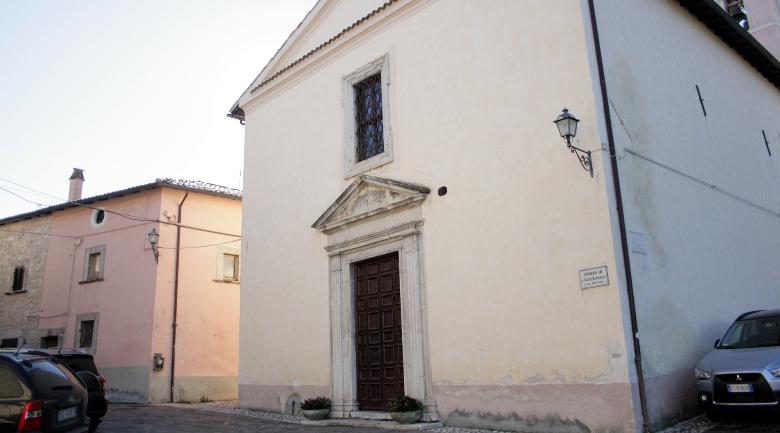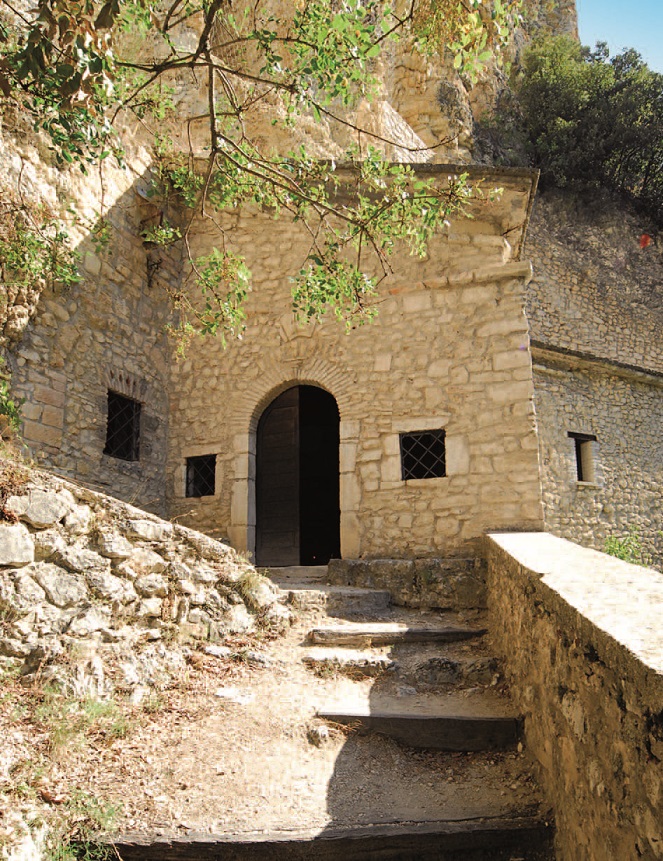The interior is a single nave with side chapels, in keeping with Roman tradition. The floor is also made of polished stone, as is the pulpit. All five altarpieces of the chapels were commissioned by Fausto Poli from Salvi Castellucci di Arezzo, a pupil of Pietro da Cortona, and his collaborators.
In the first chapel just to the left as you enter is a painting of Saint Rita of Cascia by an unknown artist. On the first altar you can see a fresco depicting the encounter between Saints Peter and Paul. On the second altar is a Madonna with Rosary and Saints Domenico and Caterina da Siena painted by Salvi Castellucci. The same artist also painted the Holy Trinity and Saints Artemio, Candida and Anthony of Padua on the altar to the right. Historians believe that it is here that relics of the martyrs Artemio, Candida and her daughter Paolina are kept, after they had been removed from the cemetery of Saint Callisto in Rome and given to Poli by Pope Urban VIII for the new Church.
On the main altar, adorned with a Transfiguration by Giovanni Maria Colombi and his co-workers, are candlesticks donated by Fausto Poli. His noble heraldic shield is engraved on the pedestal. On the last altar is a Bernini-school wooden crucifix with Saint Sebastian and Saint Anthony the Great on either side.
The Madonna with Saint Francis done by Salvi Castellucci hangs in the chapel to the right as you enter and is well worth noting, while a painting done by the same artist depicting Saint Francis receiving the stigmata has been lost.
The holy water fonts set on pillars are made of stone and have the shape of an acorn, the symbol of Cardinal Poli. Various altar paraments and liturgical vestments donated to his birthplace by the Cardinal are kept in the sacristy, including a silver chalice, two monstrances, reliquaries and other precious silver objects.

































